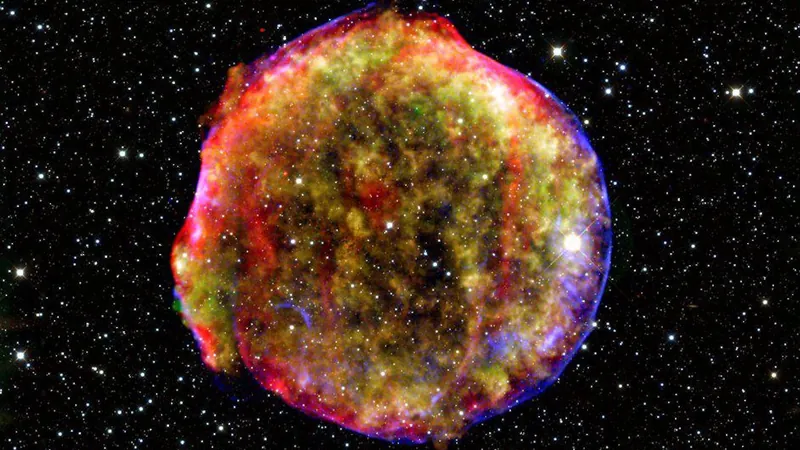
Unleashing the Universe's Most Powerful Particle Collider: Supernovas!
2025-05-25
Author: Jessica Wong
Supernovas: Nature's Ultimate Particle Colliders
Imagine a cosmic event so powerful that it rivals the most sophisticated experiments on Earth! Recent research reveals that supernovas might just be the universe's most potent particle colliders, but there's a catch: they need to pass through significant amounts of gas to unleash their full potential.
Unraveling the Mystery of Cosmic Rays
For nearly a century, astronomers have been tracking high-energy particles, known as cosmic rays, as they propel into our world. Composed mostly of protons and a smattering of heavier nuclei, these cosmic messengers often get intercepted by Earth's magnetic field or obliterated in our atmosphere. Yet, shockingly, one of these rays hits our bodies about once every second!
Beyond the Large Hadron Collider: The Power of Cosmic Rays
These cosmic rays come with varying energies, some reaching a staggering one peta-electron volt (PeV)—that’s a mind-boggling quadrillion electron volts, and up to a thousand times more potent than collisions witnessed at the Large Hadron Collider!
The Supernova Connection
For years, astronomers have thought that supernova explosions—the dramatic deaths of massive stars—could be knocking these mighty cosmic rays into creation. The explosive energy, the torrent of particles, and dynamic magnetic fields are ideal ingredients for this cosmological recipe.
Rethinking Supernova Remnants
However, observations of nearby supernova remnants like Tycho and Cassiopeia A have left scientists puzzled; these areas weren’t producing the anticipated, high-energy cosmic rays. But don’t count supernovas out just yet! A new study, accepted for publication in Astronomy & Astrophysics, sheds light on their true potential.
The Birth of 'PeVatrons'
Researchers propose that under special circumstances, supernova remnants can indeed transform into what they dub 'PeVatrons'—explosive events capable of generating those sought-after PeV cosmic rays. But there's a critical condition: before exploding, a star must shed at least two solar masses of its outer layers, ideally keeping this material dense and close.
The Chaotic Aftermath
When the star finally detonates, the resulting shockwave collides with this dense shell of material, unleashing a fury of activity. As the shock wave races through, magnetic fields soar to extraordinary levels, accelerating subatomic debris into a frenzy. Each bounce within the shock wave empowers the particles until they are ejected into the universe.
Why Do the Fires Fade?
However, the excitement is fleeting. Within months, the shock wave begins to slow, and while it continues to generate an abundance of cosmic rays, it falls short of reaching the towering PeV threshold.
A Cosmic Revelation!
This groundbreaking understanding not only unravels the enigma of supernovae but also opens doors to explore the cosmic processes that could elevate our comprehension of the universe itself! Stay tuned for more cosmic insights that push the boundaries of our knowledge!




 Brasil (PT)
Brasil (PT)
 Canada (EN)
Canada (EN)
 Chile (ES)
Chile (ES)
 Česko (CS)
Česko (CS)
 대한민국 (KO)
대한민국 (KO)
 España (ES)
España (ES)
 France (FR)
France (FR)
 Hong Kong (EN)
Hong Kong (EN)
 Italia (IT)
Italia (IT)
 日本 (JA)
日本 (JA)
 Magyarország (HU)
Magyarország (HU)
 Norge (NO)
Norge (NO)
 Polska (PL)
Polska (PL)
 Schweiz (DE)
Schweiz (DE)
 Singapore (EN)
Singapore (EN)
 Sverige (SV)
Sverige (SV)
 Suomi (FI)
Suomi (FI)
 Türkiye (TR)
Türkiye (TR)
 الإمارات العربية المتحدة (AR)
الإمارات العربية المتحدة (AR)